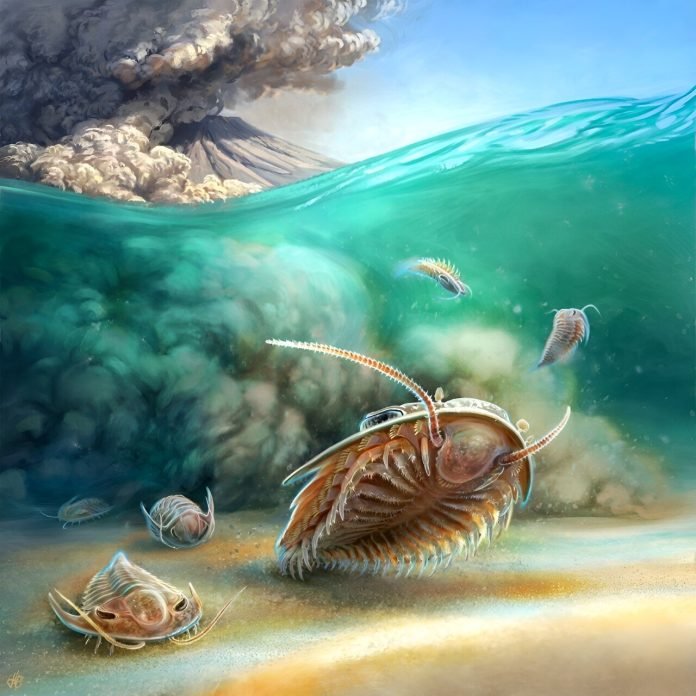
Scientists have uncovered some of the most well-preserved trilobite fossils ever found, offering new insights into these ancient marine creatures that lived over 500 million years ago.
Discovered in the High Atlas Mountains of Morocco, these “Pompeii” trilobites were incredibly preserved in volcanic ash, similar to how the eruption of Mount Vesuvius preserved the city of Pompeii.
The study, titled “Rapid volcanic ash entombment reveals the 3D anatomy of Cambrian trilobites,” was published in the journal Science.
An international team of researchers led by Professor Abderrazak El Albani from the University of Poitiers and Dr. Greg Edgecombe from the Natural History Museum, has been examining these extraordinary fossils.
Dr. Edgecombe, who has studied trilobites for nearly 40 years, was amazed by the 3D preservation of these specimens. “I’ve seen a lot of soft anatomy of trilobites, but it’s the 3D preservation here that is truly astounding,” he said.
This discovery shows that volcanic ash in shallow marine environments can be incredibly effective at preserving fossils.
Trilobites are one of the most well-studied fossil groups due to their hard, calcified exoskeletons. Over 20,000 species have been described by scientists. However, soft tissue preservation in trilobites is rare, which has limited our understanding of their complete anatomy.
The Moroccan trilobites were buried quickly in hot volcanic ash, which helped preserve their bodies in remarkable detail. This rapid fossilization process preserved not only the hard exoskeletons but also the soft tissues, including legs, hair-like structures, and even digestive tracts filled with ash. Tiny “lamp shells” attached to the trilobites’ exoskeletons were also preserved in their original positions.
Using CT scanning and computer modeling, the researchers were able to examine the trilobites in unprecedented detail. They found that the trilobites had four pairs of head appendages, instead of the previously thought three pairs. This discovery was made possible because of the exceptional preservation of these fossils.
The scans also revealed a fleshy lobe covering the mouth, known as a labrum, which had never been documented in trilobites before. Additionally, the detailed scans showed specialized leg pairs around the mouth, which likely helped the trilobites feed. These appendages had dense spines, similar to those of modern horseshoe crabs.
Professor El Albani highlighted the significance of this discovery, stating that pyroclastic deposits (volcanic ash layers) could become important targets for future fossil studies. These deposits have the potential to preserve biological remains, including delicate soft tissues, leading to significant discoveries about the evolution of life on Earth.
Co-author Harry Berks from the University of Bristol emphasized the importance of these findings, which provide a clearer picture of how trilobites lived and fed. The exceptional preservation of these fossils allows scientists to gain new insights into the biology and behavior of these ancient creatures.
This groundbreaking research not only reshapes our understanding of trilobites but also demonstrates the importance of exploring new fossil preservation sites to uncover the mysteries of ancient life.



